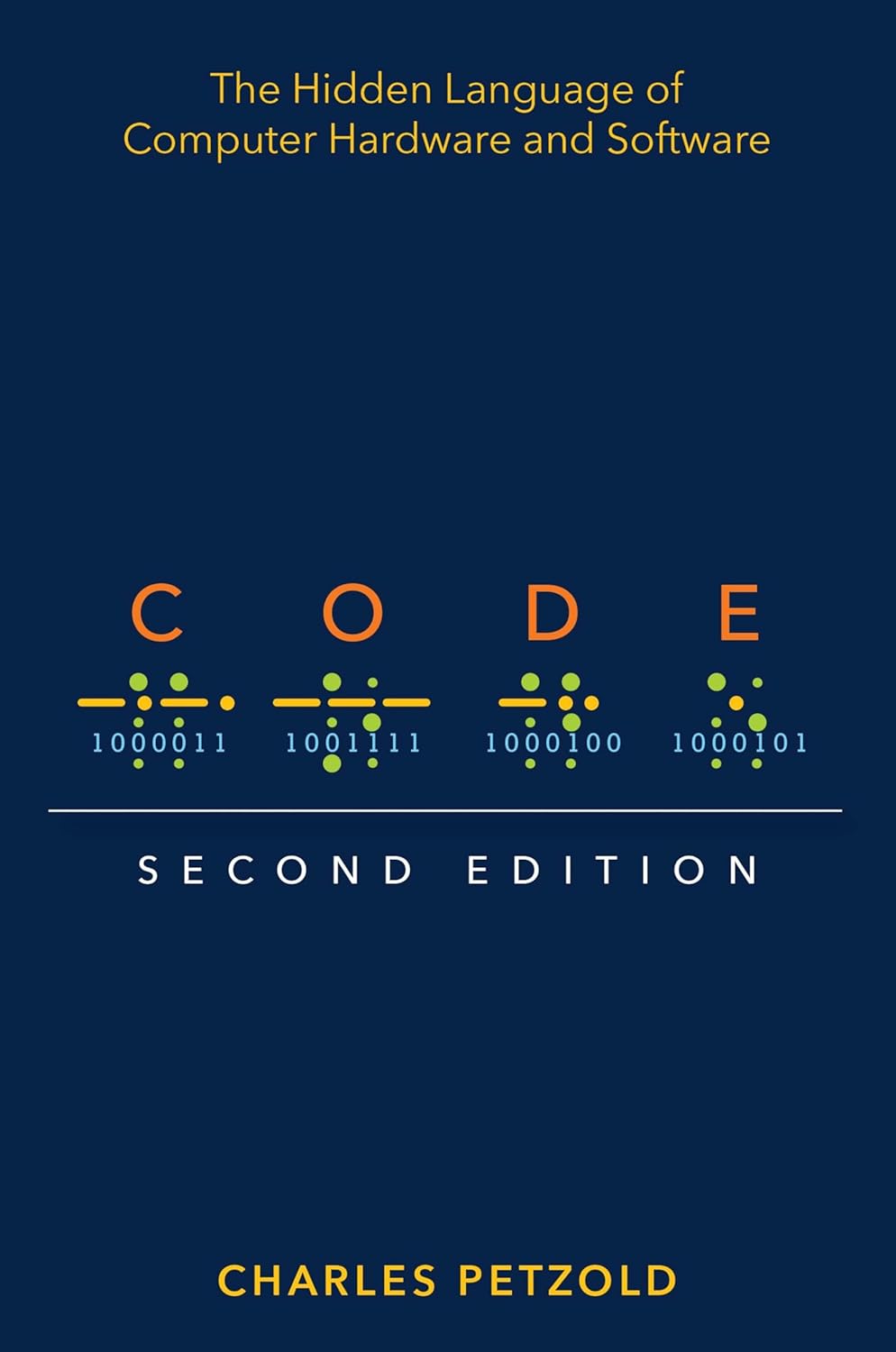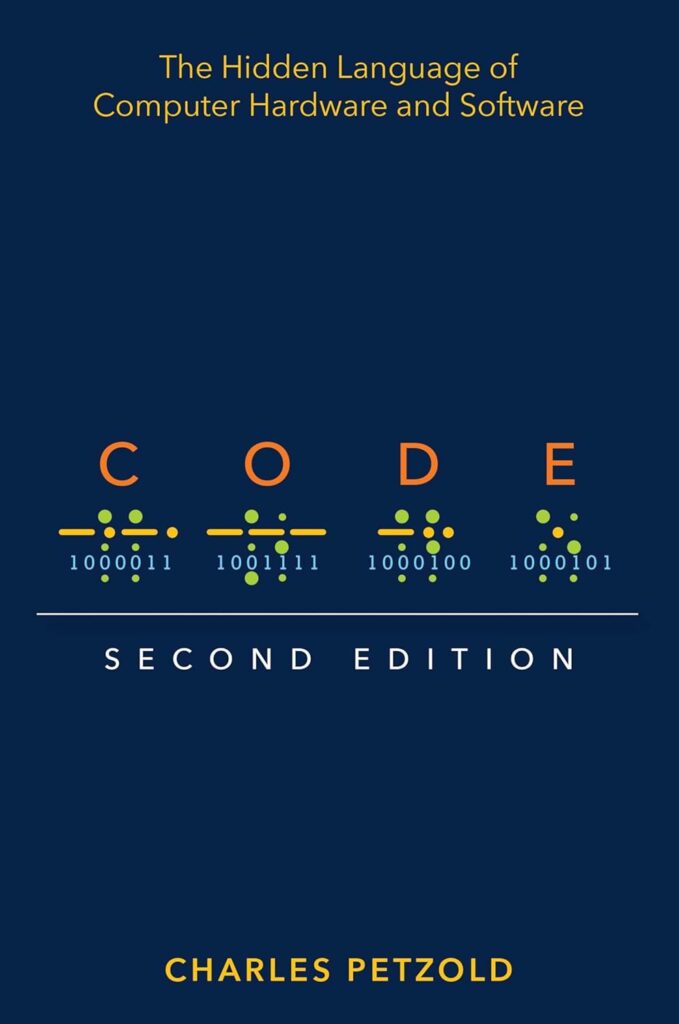
What if you could unlock the secrets behind your computer and the software running on it? I had always been curious about the inner workings of computers. When I stumbled upon “Code: The Hidden Language of Computer Hardware and Software 2nd Edition,” I knew I had to check it out. Here’s what I found out about this enlightening book.
Understanding Code: A New Perspective
The title itself is intriguing. It’s clear that this book aims to demystify the technical jargon often associated with computers. As I started reading, I realized that the author breaks down complex concepts into bite-sized, digestible pieces. This isn’t just a textbook filled with dry definitions; it’s an invitation to understand the very language of technology.
The Author’s Background
One of the first things I appreciated was how the author’s background shines through. Having a solid foundation in both silicon and software, the author provides credible insights. This blend of knowledge ensures that I was learning not just the ‘what’ but also the ‘why’ behind computer coding and hardware.
What’s Inside the Book?
The content is organized in a way that guides me smoothly from the basics to more complicated subjects. It starts with fundamental concepts, making it ideal for anyone—even those with no prior knowledge of computers.
Key Themes and Topics
Here’s a quick breakdown of some of the central topics covered:
| Topic | Description |
|---|---|
| The Basics of Binary | Understanding how computers use binary to function. |
| Hardware Components | A look at the physical parts of a computer. |
| Software Fundamentals | Distinguishing between different types of software. |
| Programming Languages | An overview of languages like Python, C++, and Java. |
| Operating Systems | How they manage hardware and provide a user interface. |
| The Internet and Networks | Fundamentals of how computers communicate. |
These topics aren’t just superficial; they’re deeply examined, providing a solid foundation for someone like me who was eager to learn.
Breaking Down Binary Code
Why Binary?
One of the first things I learned is that computers really understand only two states: on (1) and off (0). Even if I didn’t grasp it initially, the author did an excellent job of illustrating how everything from my emails to video games boils down to binary code.
Converting Decimal to Binary
I found it fascinating to learn how to convert decimal numbers (the ones we’re used to) to binary. The book provides clear examples and exercises that made the process interactive.
Conversion might seem hard at first, but with the right instructions, I was able to grasp this concept with surprising ease.
Hardware Components Explored
Understanding Hardware
It was eye-opening to learn about the various parts of a computer. The author breaks down each component’s function and relevance. For instance, I discovered the role of the CPU, RAM, and hard drives in everyday computing.
| Component | Function |
|---|---|
| CPU | Processes instructions. |
| RAM | Temporary data storage. |
| Hard Drive | Long-term storage. |
How Hardware Interacts with Software
What really connected with me was the relationship between hardware and software. The book does an incredible job of making it clear that without one, the other cannot function effectively. It’s as if they have their own dance, and understanding their choreography gave me a new appreciation for computing.
The Software Side of Things
Different Types of Software
When I started reading about software, I learned there are various types that serve numerous functions. There are system software, application software, and programming software, each playing a critical role in the computing loop.
| Type | Description |
|---|---|
| System Software | Manages hardware and provides platform for applications. |
| Application Software | Performs specific tasks for users (e.g., word processors). |
| Programming Software | Used for developing other software (e.g., compilers). |
Programming Languages and Their Importance
The entire chapter dedicated to programming languages was a treasure trove of information. It introduces various languages, and I couldn’t help but feel inspired to learn one myself. Each language has unique features, making them suited for specific tasks, from web development to data analysis.
Operating Systems: The Backbone of Computing
What is an Operating System?
Understanding operating systems (OS) was another enlightening experience. The book explains how the OS acts as a conduit between the user and the hardware, ensuring that everything runs smoothly.
Popular Operating Systems
A brief overview of the most common operating systems allowed me to identify the environment I was most comfortable with. The comparisons made me realize the strengths and weaknesses of each.
| OS | Strengths | Weaknesses |
|---|---|---|
| Windows | User-friendly, widely used. | Vulnerable to viruses. |
| macOS | Seamless integration with Apple products. | Limited software availability. |
| Linux | Open-source, highly customizable. | Steeper learning curve. |
Networking and the Internet
How Computers Communicate
One of the chapters that really captivated me was about networking and the Internet. The author simplifies complex concepts like IP addresses, protocols, and DNS into relatable analogies. It’s fascinating to learn how a simple request can travel across the world in seconds.
The Role of the Internet
The Internet landscape is beautifully explored in this section. I learned about how it revolutionized the way we access information, connect with others, and conduct business. The real-world examples helped connect the dots between theory and practice.
Real-World Applications of Code
Code in Everyday Life
The author does an excellent job of relating coding to real-world applications. It was eye-opening for me to see just how much coding impacts my daily activities, from browsing social media to online banking.
Inspiring Stories
Included are stories of people who leveraged their coding skills to innovate and solve problems. These anecdotes not only inspire but also serve as a practical guide that anyone looking to enter the tech world can relate to.
Learning Python: A Practical Approach
Why Python?
One of the most exciting chapters is dedicated entirely to Python. I appreciated how the book explains why Python is often recommended for beginners. It’s simple, readable, and immensely powerful for various applications.
Hands-On Exercise
The book provides a series of step-by-step exercises that helped me put theory into practice. Having code snippets that I could manually run and edit made the learning process fun and engaging.
Challenges of Learning to Code
Overcoming Hurdles
I also found a section addressing the common challenges faced by beginners. Whether it’s tackling bugs or understanding syntax, the author provided several tips that empowered me to tackle difficulties head-on. For example, the emphasis on the importance of debugging was incredibly beneficial.
Resources for Continued Learning
Included in this section is a plethora of resources for ongoing education. From online courses to local coding boot camps, there’s a wealth of opportunities for individuals who want to take their skills to the next level.
Conclusion: My Takeaway
Reading “Code: The Hidden Language of Computer Hardware and Software 2nd Edition” has been a transformative experience for me. It’s more than just a book; it’s a roadmap that guides readers through the intricate world of coding and computer hardware.
By the end, I no longer felt like a digital bystander. Instead, I felt empowered with knowledge, ready to take on the challenges and opportunities that come with comprehending technology. If you’re leaning toward understanding the digital world, I wholeheartedly recommend this book. It’s not just about learning to code; it’s about understanding the language that drives our increasingly technology-filled lives.
Disclosure: As an Amazon Associate, I earn from qualifying purchases.


